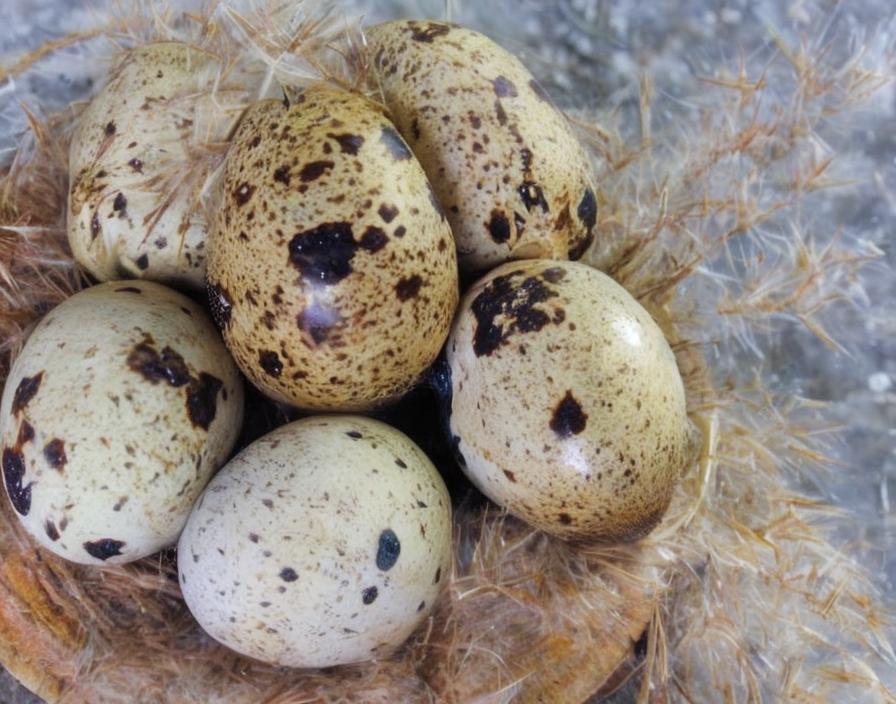Quails are small, ground-dwelling birds that are popular for their delicious eggs and meat. There are several different breeds of quail, each with its own unique characteristics and traits. Some of the most common quail breeds include the Coturnix quail, Bobwhite quail, Gambel’s quail, and California quail. Each breed has its own distinct coloration, size, and behavior, making them a popular choice for hobbyists and farmers alike.
Coturnix quail, also known as Japanese quail, are one of the most popular breeds for egg production. They are small in size, easy to care for, and come in a variety of colors including brown, white, and tuxedo. Bobwhite quail are native to North America and are known for their distinctive call and attractive plumage. Gambel’s quail are found in the southwestern United States and are known for their striking black and white facial markings. California quail, also known as Valley quail, are native to the western United States and are known for their elegant crest and intricate plumage. Understanding the different characteristics of each quail breed is essential for successfully keeping them together in a mixed flock.
Key Takeaways
- There are various quail breeds with different characteristics and purposes, such as egg production or meat.
- Quails are social birds with a pecking order, and understanding their behavior is crucial for keeping them together.
- Some quail breeds are more compatible with each other than others, and it’s important to consider their size and temperament.
- Housing for mixed quail breeds should provide enough space and separate areas for nesting and feeding.
- A balanced diet and proper care are essential for keeping mixed quail breeds healthy and productive.
Understanding Quail Behavior
Quails are social birds that thrive in the company of their own kind. They are generally peaceful and non-aggressive, but like any animal, they have their own social hierarchy and territorial behaviors. Understanding quail behavior is crucial for successfully keeping different quail breeds together in a mixed flock.
Quails are ground-dwelling birds that prefer to stay close to the ground and are not strong fliers. They are active during the day and spend most of their time foraging for food, dust bathing, and socializing with other members of their flock. Quails communicate through a variety of vocalizations, including calls, chirps, and alarm sounds. They also use body language to communicate with each other, such as raising their crest feathers or puffing up their bodies to display dominance or aggression.
When introducing different quail breeds to each other, it’s important to observe their behavior closely to ensure that they are getting along. Signs of aggression or bullying, such as pecking, chasing, or feather plucking, should be monitored and addressed to prevent any serious harm. Providing enough space, hiding spots, and resources can help minimize aggression and ensure a harmonious coexistence among different quail breeds.
Compatibility of Different Quail Breeds
When considering keeping different quail breeds together in a mixed flock, it’s important to understand the compatibility of each breed. While quails are generally social birds that prefer the company of their own kind, some breeds may not be compatible with others due to differences in size, temperament, or behavior.
Coturnix quail are known for their docile nature and are generally compatible with other quail breeds. They are small in size and tend to be non-aggressive, making them a good choice for mixed flocks. Bobwhite quail, on the other hand, can be more territorial and aggressive, especially during breeding season. It’s important to consider the size and space requirements of each breed when keeping them together in a mixed flock.
Gambel’s quail and California quail are both native to North America and have similar temperaments and behaviors. They are generally compatible with other quail breeds and can coexist peacefully in a mixed flock. However, it’s important to monitor their interactions closely to ensure that there is no bullying or aggression among different quail breeds.
When introducing different quail breeds to each other, it’s important to provide enough space, hiding spots, and resources to minimize competition and aggression. By understanding the compatibility of different quail breeds, hobbyists and farmers can successfully keep them together in a mixed flock.
Housing Requirements for Mixed Quail Breeds
Proper housing is essential for successfully keeping different quail breeds together in a mixed flock. When housing mixed quail breeds, it’s important to consider the space requirements, shelter options, and environmental enrichment for each breed.
Quails require a secure and predator-proof housing structure that provides enough space for them to move around freely. The housing should have proper ventilation, insulation, and flooring that is easy to clean and maintain. When housing mixed quail breeds together, it’s important to provide enough space to prevent overcrowding and minimize aggression.
Each quail breed may have different shelter preferences, such as nesting boxes, roosting perches, or hiding spots. Providing multiple shelter options can help minimize competition and aggression among different quail breeds. It’s also important to provide environmental enrichment, such as dust bathing areas, foraging opportunities, and toys or objects for pecking and exploration.
When designing the housing for mixed quail breeds, it’s important to consider the specific needs and behaviors of each breed. By providing a secure and enriching environment, hobbyists and farmers can successfully house different quail breeds together in a mixed flock.
Feeding and Care for Mixed Quail Breeds
Proper feeding and care are essential for maintaining the health and well-being of mixed quail breeds. When feeding mixed quail breeds together in a flock, it’s important to consider the dietary requirements, feeding habits, and nutritional needs of each breed.
Quails are omnivorous birds that require a balanced diet of commercial quail feed, fresh fruits and vegetables, grains, seeds, and protein sources such as mealworms or crickets. When feeding mixed quail breeds together, it’s important to provide enough food and water stations to prevent competition and ensure that all birds have access to adequate nutrition.
Each quail breed may have different feeding habits and preferences, so it’s important to observe their behavior closely when introducing new foods or treats. Providing a varied diet can help prevent boredom and encourage natural foraging behaviors among different quail breeds.
In addition to proper feeding, it’s important to provide regular care and maintenance for mixed quail breeds. This includes monitoring their health, cleaning their housing regularly, providing veterinary care when needed, and ensuring that they have a safe and enriching environment to thrive in.
By understanding the feeding habits and care requirements of different quail breeds, hobbyists and farmers can ensure the health and well-being of their mixed flock.
Monitoring and Managing Aggression

When keeping different quail breeds together in a mixed flock, it’s important to monitor their behavior closely and manage any signs of aggression or bullying. Aggression among mixed quail breeds can lead to serious injuries or stress, so it’s important to take proactive measures to prevent and address any aggressive behavior.
One way to manage aggression among mixed quail breeds is by providing enough space, hiding spots, and resources to minimize competition. This includes providing multiple feeding stations, nesting boxes, roosting perches, and dust bathing areas to prevent overcrowding and territorial disputes.
It’s also important to observe the social dynamics within the flock and intervene if necessary. This may involve separating aggressive individuals from the rest of the flock or providing temporary isolation for birds that are being bullied. By monitoring their behavior closely, hobbyists and farmers can identify any signs of aggression early on and take appropriate measures to manage it.
In some cases, aggression among mixed quail breeds may be related to breeding season or hormonal changes. Providing enough space and environmental enrichment can help minimize breeding-related aggression and ensure a harmonious coexistence among different quail breeds.
By monitoring their behavior closely and taking proactive measures to manage aggression, hobbyists and farmers can successfully keep different quail breeds together in a mixed flock.
Tips for Successfully Keeping Different Quail Breeds Together
Keeping different quail breeds together in a mixed flock can be a rewarding experience for hobbyists and farmers alike. By understanding the characteristics, behavior, compatibility, housing requirements, feeding habits, care needs, and aggression management of different quail breeds, it’s possible to successfully keep them together in a harmonious coexistence.
Some tips for successfully keeping different quail breeds together include providing enough space, shelter options, environmental enrichment, food and water stations, regular care and maintenance, monitoring behavior closely, managing aggression proactively, and seeking veterinary care when needed.
By following these tips and taking proactive measures to ensure the health and well-being of mixed quail breeds, hobbyists and farmers can enjoy the beauty and diversity of these fascinating birds in a mixed flock setting. With proper understanding and management, keeping different quail breeds together can be a fulfilling experience for all involved.
If you’re considering keeping different quail breeds together, it’s important to understand their compatibility and living requirements. In a related article on PoultryWizard, you can learn about the importance of providing a suitable environment for ducks, including what to feed them and how to care for their specific needs. Understanding the nuances of housing and feeding various poultry species can help ensure a harmonious and thriving flock. Check out the article here for valuable insights into duck care that can also inform your approach to keeping different quail breeds together.
FAQs
Can different quail breeds live together?
Yes, different quail breeds can live together as long as they are introduced to each other at a young age and have enough space to establish their own territories.
What should I consider before housing different quail breeds together?
Before housing different quail breeds together, it is important to consider the size of the enclosure, the ratio of males to females, and the compatibility of the breeds in terms of temperament and size.
What are the potential challenges of housing different quail breeds together?
Potential challenges of housing different quail breeds together include aggression between the different breeds, competition for resources such as food and water, and potential crossbreeding if the breeds are not kept separate.
How can I introduce different quail breeds to each other?
When introducing different quail breeds to each other, it is best to do so gradually and in a neutral territory to minimize aggression. Monitoring their interactions closely and providing plenty of hiding spots can also help with the introduction process.
Are there any specific breeds of quail that are more compatible with each other?
Some quail breeds are known to be more compatible with each other, such as the Coturnix quail breeds, which are often kept together due to their similar size and temperament. However, compatibility can vary depending on the individual birds.
Meet Walter, the feathered-friend fanatic of Florida! Nestled in the sunshine state, Walter struts through life with his feathered companions, clucking his way to happiness. With a coop that’s fancier than a five-star hotel, he’s the Don Juan of the chicken world. When he’s not teaching his hens to do the cha-cha, you’ll find him in a heated debate with his prized rooster, Sir Clucks-a-Lot. Walter’s poultry passion is no yolk; he’s the sunny-side-up guy you never knew you needed in your flock of friends!







